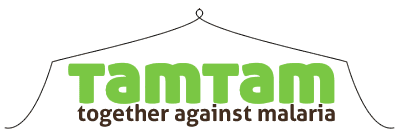
In Accra, the TAMTAM team benefited from the input and expertise of the Ghana National Malaria Control Program, USAID’s malaria control team, and ProMPT (Promoting Malaria Prevention and Treatment), among others. Their insights into current and future malaria activities and learning from past initiatives have greatly informed TAMTAM’s study.
In the context of a point distribution, TAMTAM’s study will examine the rates of net self-installation and leakage over time, as well as the impact on usage of using community health volunteers to hang nets in homes. To support the plans of Ghana’s National Malaria Control Program, our study will be located in the Eastern Region, which is a high priority region list for large-scale mosquito net distributions to achieve full coverage. We are collaborating with one of ProMPT’s local partners, KLO Drivers Alliance based in Asesewa, close to the capital of Eastern Region, called Koforidua. KLO has been working locally on health initiatives for a decade and has networks of volunteers throughout the many communities it serves. Originally, KLO focused on connecting with taxi and public transport drivers as a means to combat the spread of HIV/AIDS. Here is Mr. Sackitey Offei, director of KLO signing an MOU with TAMTAM.

KLO works hand-in-hand with a local health clinic in the sub-district of Dzamam, which will be the base for TAMTAM’s field activities. Located on a quiet dirt road, the clinic employs 4 staff and acts as a hub for the community health volunteers and health initiatives. We have been pleased to meet the committed and capable staff and found their guidance critical to arranging local plans.

We have submitted our tome of documents (above) to the Ghana Health Service Ethics Review Committee for IRB approval. We have identified 7 community health volunteers for our project – at least one for each of the communities we will cover with mosquito nets: Dzamam, Dawatrim, Brepaw, Afuafie, Adwenso, and Takorase. These volunteers will be our hands and feet in the villages where they will collect assess household sizes and population counts, assist in the distribution of mosquito nets and complete follow-up activities such as hang-up and monitoring.
The TAMTAM team is looking forward to putting mosquito nets over at-risk populations very shortly! Many thanks for all the emails and generous support that have come to us here in the field.
